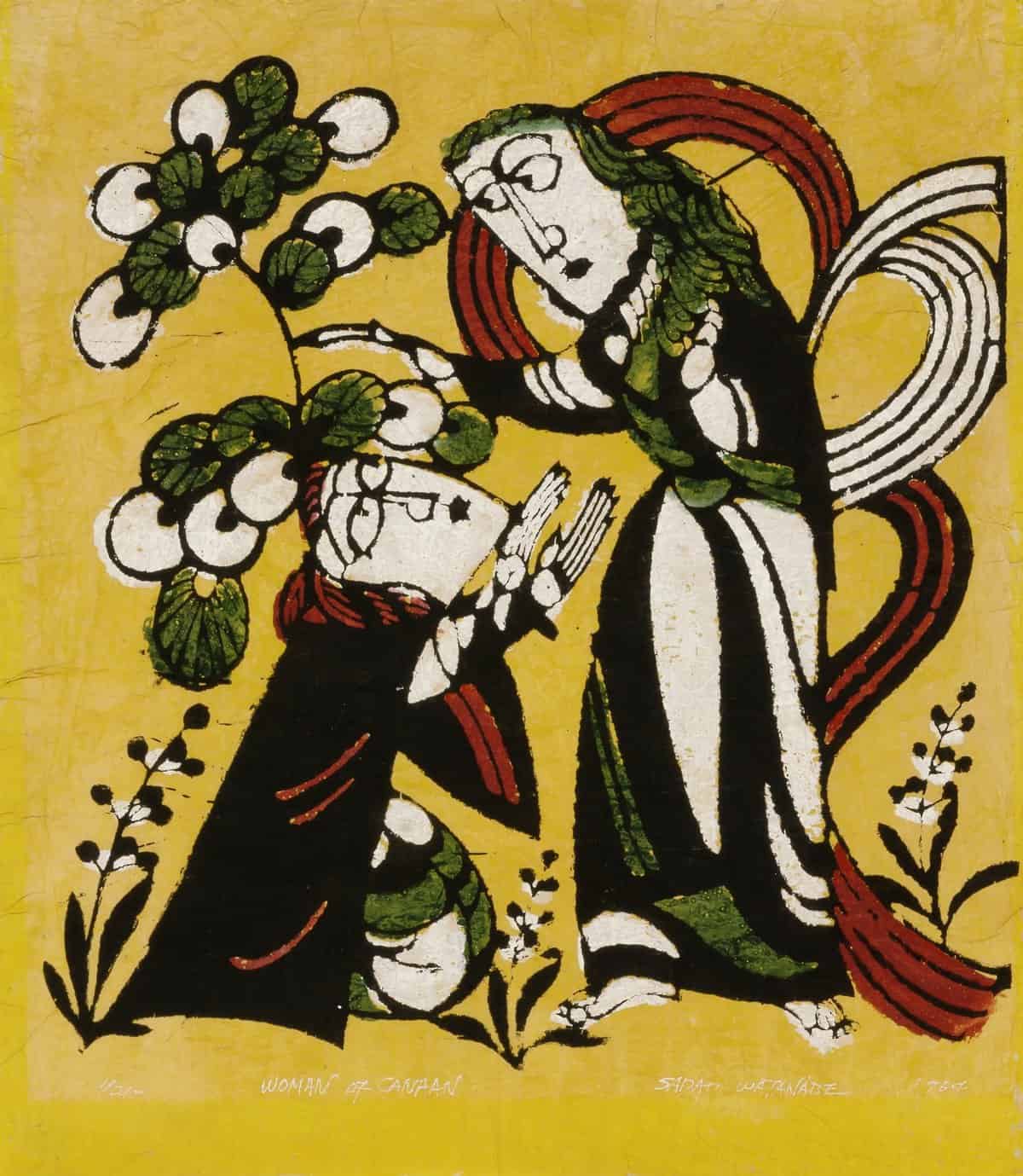
In the book Art and Soul: Signposts for Christians in the Arts, authors Hilary Brand and Adrienne Chaplin draw a parallel between modern-day art museums and religious shrines: “Go inside any gallery and the atmosphere is hushed and reverent. If you dare to touch any exhibit, so swift are the attendants’ reprimands that you could almost imagine a punishment of instant death… The irony, of course, is that as art museums become more like churches, so churches in their turn become more like museums.” In a world in which many look to art galleries as strongholds of truth and transcendence, while thinking of churches as receptacles for stale and outdated ideas, it’s rare to find a contemporary artist whose work is equally at home in both settings.
Sadao Watanabe, however, is just such an artist. This Japanese printmaker’s work, which portrays exclusively biblical scenes, has been exhibited everywhere from San Francisco’s Episcopal Grace Cathedral to New York’s prestigious Museum of Modern Art—not to mention the White House, the Vatican Museum, the National Museum of Modern Art in Tokyo, and the Art Institute of Chicago, among others.
Born in Tokyo in 1913, Watanabe dropped out of school at an early age to become a dyer’s apprentice. At age 24, he encountered the work of master textile designer Keisuke Serizawa at an exhibit and was inspired by it. Watanabe eventually studied under Serizawa, who taught him traditional Japanese techniques like katazome (fabric dying) and kappazuri (block printing). As a result of the influence of Serizawa and other mentors, Watanabe became a part of the Japanese folk art movement, or mingei. In keeping with the philosophy behind the mingei movement, Watanabe used natural materials, like organic and mineral pigments dissolved in soybean milk, to create his color washes and printed on handmade papers.
Despite living in a nation where Christians constitute less than 3 percent of the population, the young Watanabe was invited to church by a neighbor. Shortly after overcoming a severe case of tuberculosis, Watanabe accepted Christ and was baptized at age 17. Throughout his life, Watanabe’s faith heavily influenced—one might even say dominated—his art. Watanabe reportedly prepared himself to create his prints, each of which portrays a scene from the Bible, by meditating on the texts from which he drew his images.
Watanabe’s deep personal devotion in combination with the distinctive mingei influence of his teachers helped him to produce images that are refreshingly un-gimmicky. In a Christian visual landscape so often littered with sentimentality and kitsch, the humble straightforwardness of Watanabe’s simplified figures, with their segmented bodies and limited color palette, provide a welcome break for the eye. Watanabe’s prints are characterized by graphic black outlines imposed onto thick momigami (kneaded) or washi (handmade) paper. The richly textured wood-pulp papers provide a striking contrast to the flat, stylized figures printed on them in black and highlighted with three or four colors at most. This combination produces an effect that feels more ancient than modern, despite the fact that most of Watanabe’s prints were made in the ’70s and ’80s.
The apparent simplicity of Watanabe’s prints, however, should not be mistaken for a lack of skill or forethought. Watanabe’s attitude towards his art was characteristically mingei in that it was meant to be “by the people, for the people,” and his highly accessible style reflects this. Though it may hang alongside that of artists like Ad Reinhardt or Ellsworth Kelly, Watanabe’s work refuses to shroud itself in the obscurity that makes so much modern art difficult for the average viewer to appreciate. Watanabe intentionally sought to create pieces that would portray gospel stories in a way the viewer would find intimately relatable. He once stated that he most liked to see his prints hanging “where people ordinarily gather, because Jesus brought the gospel for the people.”
Watanabe liked to see his prints hanging “where people ordinarily gather, because Jesus brought the gospel for the people.”
For Watanabe, the application of this philosophy meant creating art that was deeply rooted in his own culture, even if his culture was one that had historically rejected and even persecuted Christians. This meant art that, though celebrated internationally, was originally created by a Japanese man for a Japanese audience. It has been noted that Watanabe’s biblical characters often appear in a Japanese context: Many appear to be dressed in traditional Japanese garb like kimonos; his various portrayals of the Last Supper include food and table settings that resemble a typical Japanese celebration meal (complete with what appears to be sushi and sake).
Whether one is Japanese or not, however, Watanabe’s articulation of the Bible through his own cultural lens communicates a message worth hearing for any Christian: The gospel is equally relevant to and at home in all cultures. The God who became human in a specific Middle Eastern nation—speaking a specific language and living by specific local customs—is just as willing to enter into the lives of his followers today, regardless of whether the wine they drink in communion is fermented from rice or grapes.
Whitney Bauck is a photographer and art student at Wheaton College in Wheaton, Ill.
Editor’s note: This article first appeared in the January/February 2013 issue of PRISM Magazine, published by Christians for Social Action.

